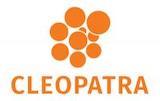(1) Explain your problem, don't simply post "This isn't working". What were you doing when you faced the problem? What have you tried to resolve - did you look for a solution using "Search" ? Has it happened just once or several times?
(2) It's also good to get feedback when a solution is found, return to the original post to explain how it was resolved so that more people can also use the results.





Activities are not linked at all. But previous activities produce some dummy resource and succeeding activity use this resource. The resource may be consumable or renewable - both options can be applied. Resource produced by one activity is sufficient for performing next activity.
It can be easily done for three activities out of ten.
Best Regards,
Vladimir